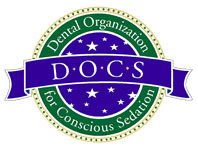
Methuen Dentist Discusses Smile Enhancing Procedures
While general dentistry focuses on treating and preventing oral complications, cosmetic dentistry is focused primarily on improving a person’s smile, as well as the overall appearance of their teeth.
And, although most cosmetic procedure are usually performed for aesthetic reasons, in some cases, the procedure may also offer some type restorative benefit as well.
Some of the more common cosmetic procedures, such as having your teeth whitened are straightforward and can be performed by most dentists. However, other cosmetic procedures are much more complicated and require a specialist’s touch.
Today, we’ll look at 5 of the most common types of cosmetic dentistry with our Methuen dentist.
Composite Bonding
Bonding is one of the most cost-effective cosmetic procedures and is used to repair all sorts of minor issues ranging from tooth decay to chipped teeth. Simply referred to as “bonding,” the procedure requires that our Methuen dentist remove any damaged or decayed areas of the tooth before applying the bonding agent. Next, Dr. Sandler will apply the composite directly to the tooth’s surface and then shape it to match your natural teeth.
Dental Implants
Dental implants are typically used to replace missing teeth. For the implant procedure, Dr. Sandler will surgically insert a small screw into your jawbone. This screw will then serve as a permanent support for the implant’s crown. Once the screw has healed and the surrounding tissue has fused to it, we'll be able affix the crown to the screw. Dental implants are said to be virtually indistinguishable from your other teeth.
Whitening
Having your teeth whitened is one of the simplest and most common of all cosmetic procedures. Dr. Sandler will first clean your teeth and make sure that there is no plaque or tartar left on your teeth. Then, they will apply a whitening, or bleaching solution to your teeth. If desired, this procedure can be used to achieve shades that are even lighter than your natural tooth color.
Inlays and Onlays
Also known as an indirect filling, inlays and onlays are molded in a lab and are shaped to match your teeth perfectly. Indirect fillings are typically used when mild to moderate tooth decay is present or when there is not enough tooth to support a traditional filling.
Inlays are used when a tooth’s cusps are still intact. This allow the inlay to be placed directly on the surface of the tooth. On the other hand, onlays are used when the cusp, or a large portion of the tooth, is damaged.
Veneers
Dental veneers are made specifically for each patient and are designed to closely resemble a person’s natural teeth. Veneers are usually made from a super-strong medical-grade ceramic and tend to look exceptionally realistic.
Furthermore, veneers can be used to fix other cosmetic issues such as crooked teeth, cracked enamel and they can even be used to fill in minor gap between teeth.









